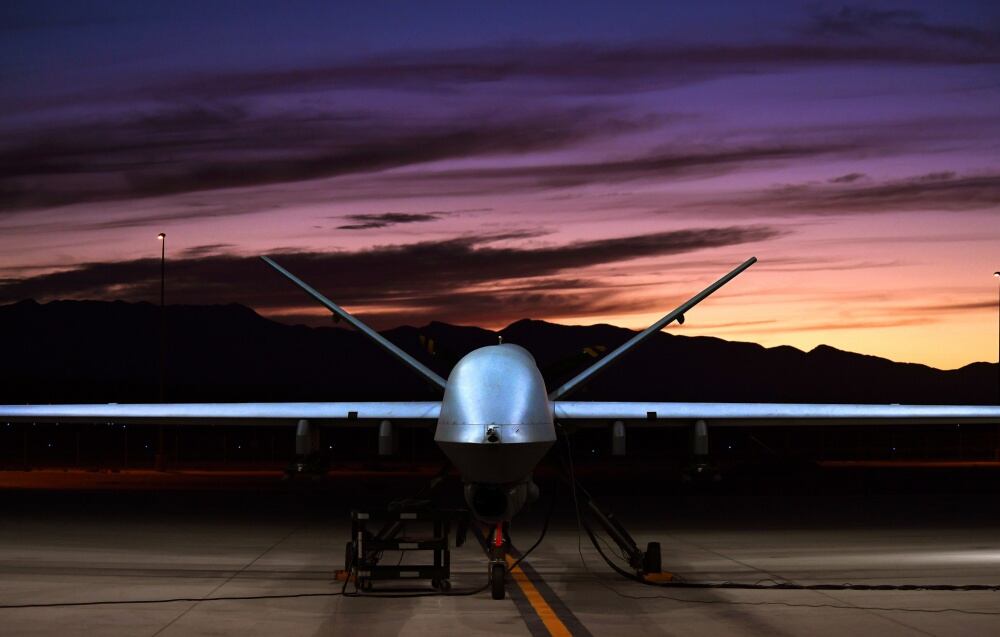WASHINGTON — Last year was a strong one for the U.S. aerospace and defense industry, generating $865 billion in economic output and accounting for nearly 2 percent of the country’s gross domestic product. But reforming the conventional arms transfer, or CAT, policy could do even more for defense companies that bemoan the current arms transfer bureaucracy, sometimes criticized as sluggish and ineffective.
The overall security cooperation enterprise that reviews and approves all defense exports is comprised of various agencies in the departments of State, Commerce and Defense. The enterprise is understaffed and organized in a way that can make the approval process inefficient and redundant, which impedes the ability of the U.S. to engage with allies and partners. In April, the Trump administration issued a national security presidential memorandum, adjusting the arms transfer rules and priorities and requesting an implementation plan for the changes within 60 days.
A key line of thinking in the memo is the belief that economic security bolsters national security. The memo argues reforming CAT policy will enable the U.S. to maintain a technological leg up over adversaries, strengthen strategic partnerships that extend U.S. influence, and better equip allies and partners to contribute to shared security objectives and to enhance global deterrence “by better aligning our policy regarding conventional arms transfers with our national and economic security interests.”
The result of reforming the CAT policy could mean more jobs and revenue for the U.S. defense-industrial base, although the benefits may not be widely felt.
Speaking with Defense News at the Farnborough Airshow in July, the president and CEO of the Aerospace Industries Association echoed this belief.
“I’ve always believed national security and economic security are very much intertwined,” Eric Fanning said. “The aerospace industry is 2.4 million American workers; they make 81 percent more than the national average; we paid out $220 billion in wages and benefits last year. And so these really are symbiotic in that way.”
RELATED

Total 2017 defense revenues for the defense companies in the Defense News Top 100 list came in at $375.4 billion, a 2.9 percent increase over 2016 figures. The top 25 companies accounted for 71.4 percent of total defense revenue in the year, and the top 10 firms accounted for 51.6 percent of total defense revenue in the year. While those percentages are both slightly lower than in 2016, it shows that the defense industry remains a top-heavy marketplace. Geographically, 40 of the firms on the list are based in the U.S., which accounted for around 59 percent of total defense revenue.
What’s the plan?
The State Department, in conjunction with its interagency partners, submitted an implementation plan on July 13 that focuses on three lines of effort: prioritizing strategic competition, organizing for success and creating conducive environments. At a Center for Strategic and International Studies event on Aug. 8, acting Assistant Secretary of State for Political-Military Affairs Tina Kaidanow explained what these efforts ultimately mean “is that under this administration there will be no more active advocate for U.S. sales than the U.S. itself.”
She elaborated that these changes “are anchoring our armed transfers in our larger foreign policy framework, and simultaneously protecting the security and integrity of our technological advantage and our defense and industrial base.” In her remarks, Kaidanow noted that the CAT policy aligned with the Trump administration’s National Security Strategy, which included facilitating U.S. economic security.
Laura Cressey, deputy director for regional security and arms transfers at the State Department, echoed the plan’s paradigm shift to “a more proactive approach to arms transfers.” She noted that some of the streamlining efforts associated with the plan will require tweaking and revision of other relevant rules, like the International Traffic in Arms Regulations, U.S. munitions lists and commerce control lists. According to Cressey, all of the policy changes are “trying to improve our ability to compete with our adversaries by providing our partners with viable alternatives to foreign products in order to maintain influence in key regions throughout the world.”
While the implementation plan has been received with praise by some in industry and government, Fanning warned there is still a long way to go.
“The devil is in the details. There is still a lot that needs to be done to actually implement it and make sure it is a process that survives the strong leadership support we are seeing now,” he said. “But they have been very collaborative in working on this. They want to continue working on this as they actually implement the plan, and so we are optimistic it will happen, but we got to keep the pressure on the work.”
Others are more skeptical about the changes set to be made to the CAT policy, expressing concern that the implementation plan values more sales at a faster pace over human rights.
Jeff Abramson, a nonresident senior fellow for arms control and conventional arms transfers at the Arms Control Association, expressed concern about the transactional approach to the reform policy.
“My concerns here are when we stress the economic side of this, that is what is seen," he said at CSIS. "When President [Donald] Trump meets with the Saudis and holds up [a] poster and the amounts of sales, the message being perceived in the world is that the human rights, the other concerns [and] the security, they don’t matter. It is a transactional approach. It’s about faster and more, and faster and more could be a recipe for disaster.”
Abramson did commend the CAT policy reform for increasing its focus on ensuring U.S. equipment included in foreign sales are not used to commit human rights abuses. Yet, he asked that the administration and industry be more transparent with the outcome of foreign sales.
Daniel Cebul is an editorial fellow and general assignments writer for Defense News, C4ISRNET, Fifth Domain and Federal Times.








